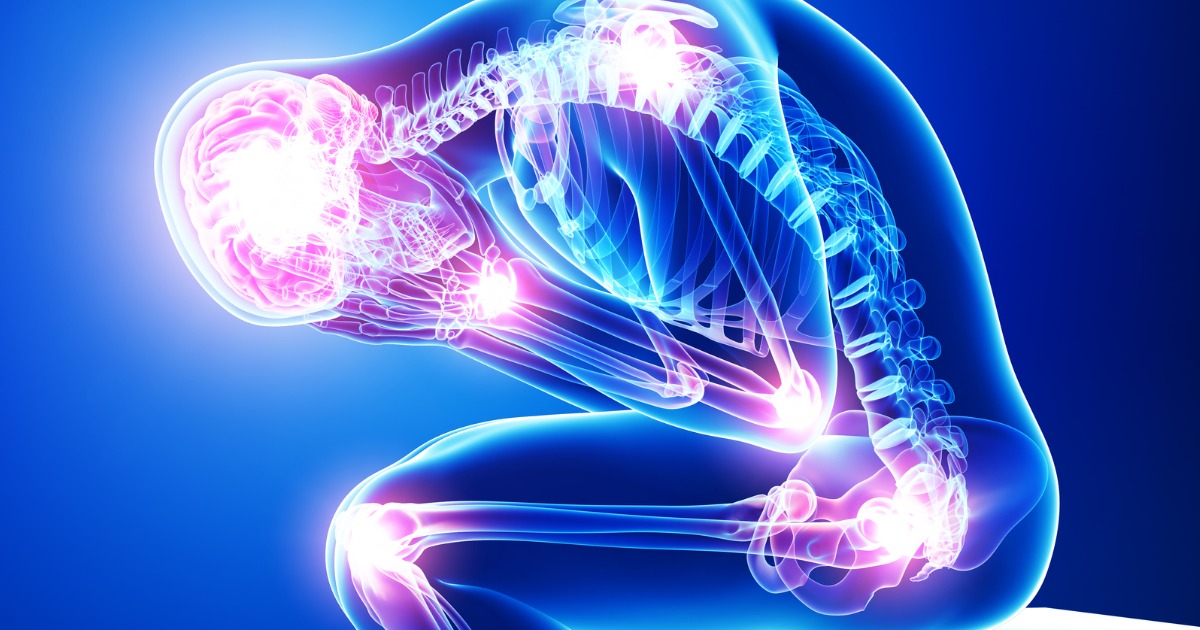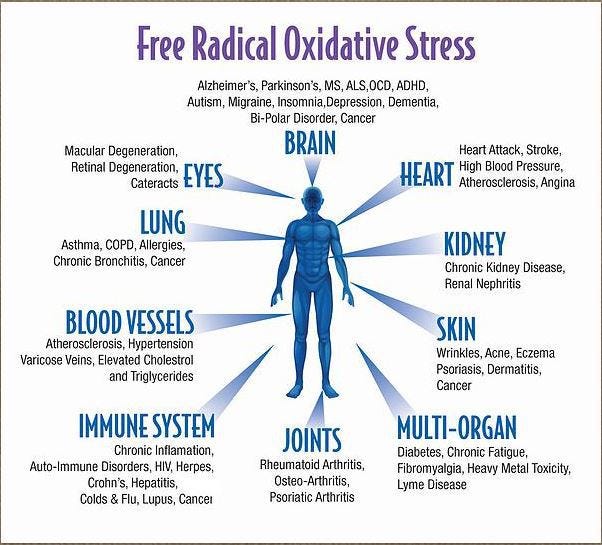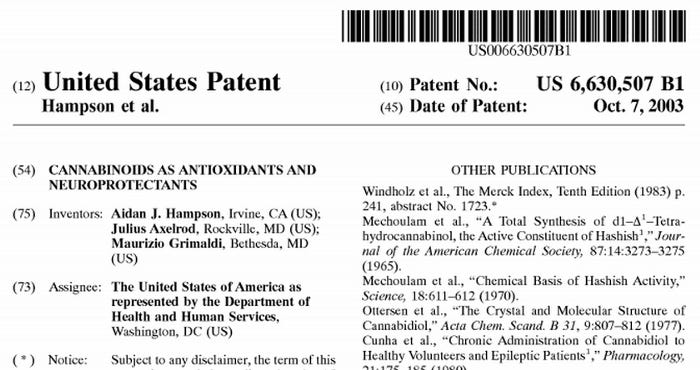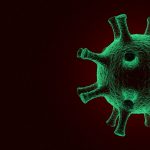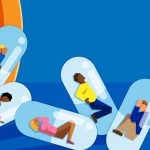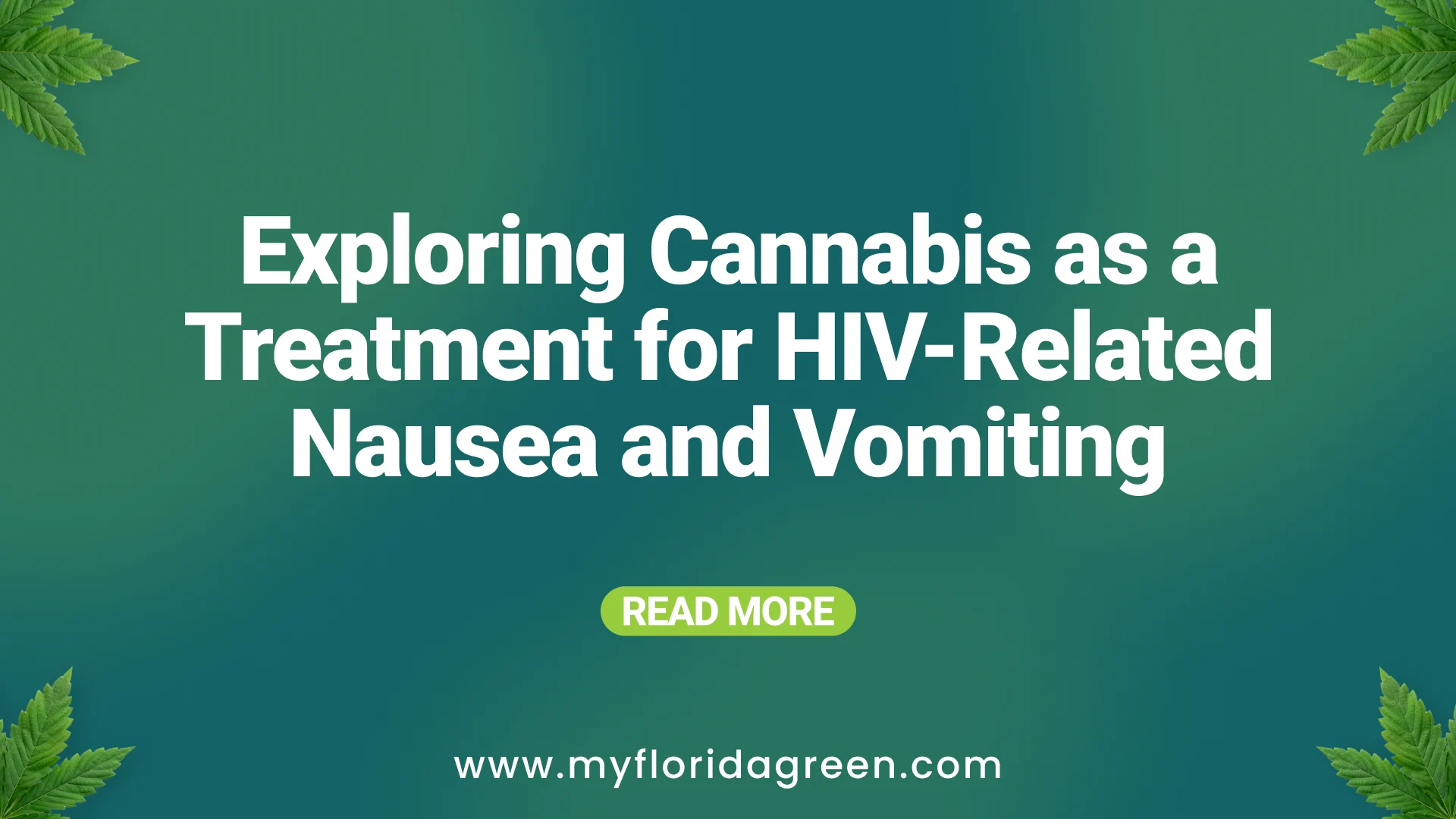We are constantly being advised to seek balance in our lives. Whether it is eating a balanced diet or the proper work/life balance.
When we apply the idea of balance to our bodies, it is referred to as “homeostasis.” You might recognize this term as it is a common theme throughout all of our blogs concerning Medical Marijuana.
The broader definition of homeostasis refers to an organism’s “ability or tendency to maintain internal stability to compensate for environmental changes.” In terms of our bodies, this relates to resiliency. How we fight off infection, compensate for toxins and repair environmental insult.
In the context of cannabis, we are referring to the Endocannabinoid System (ECS) and the regulatory, balancing effects of the various cannabinoids present in Medical Marijuana. In a fascinating twist of fate, evolution, or divine intervention, cannabinoids from the plant have a unique ability to fit into the CB1 and CB2 endocannabinoid receptors in our brains and on the tissues of our cells. In doing so, they help our body balance, heal naturally, and get back into homeostasis.
If Marijuana Help Us Heal, What Hurts Us?
We have intricate systems of atoms, molecules and receptors which make up the cells of our bodies. For those a little rusty on their biology, atoms contain protons and electrons. When two atoms attach together, they form a molecule. A collection of molecules grouped together creates cells.
Atoms usually contain equal numbers of protons and electrons and that atom is electrically neutral. If an atom has more or fewer electrons than protons, then it has an overall negative or positive charge, respectively, and it is called an ion. Other atoms with unpaired electrons are known as radicals and are highly reactive.
When oxygen molecules split into single atoms that have unpaired electrons, they become unstable free radicals that seek other atoms or molecules to bond to. If this continues to happen, it begins a process called oxidative stress.
Free radicals can cause large chain chemical reactions in your body because they react so easily with other atoms and molecules. Antioxidants are molecules that can donate an electron to a free radical without making themselves unstable. This causes the free radical to stabilize and become less reactive.
Oxidative stress is an imbalance between free radicals and antioxidants in your body. These reactions are called oxidation. This imbalance leads to damage of important biomolecules and cells, with potential impact on our entire body. Oxidative stress can activate a variety of proteins that affect DNA, which leads to the expression of some genes involved in inflammatory mechanisms. This is how inflammation is triggered by oxidative stress.
Stress induced oxidative stress and the resulting inflammation play a major role in aging and development of various diseases. You think of a disease; oxidative stress and/or inflammation are believed to be one of their generative factors. Some of the important diseases in which oxidative stress and inflammation play an important role are:
- coronary heart disease (CHD)
- hypertension
- metabolic syndrome
- diabetes
- kidney dysfunction
- pulmonary insufficiency
- atherosclerosis
- rheumatoid arthritis
- inflammatory bowel disease
- neurodegenerative diseases such as Alzheimer’s, Parkinson’s and ALS
- age-related macular degeneration
Oxidative stress is also thought to be involved in: ADHD, cancer, sickle-cell disease, lichen planus, vitiligo, autism, infection, chronic fatigue syndrome, depression and Asperger’s syndrome.
The Role Of Medical Marijuana On Oxidative Stress
THC and CBD are powerful antioxidants — more powerful than vitamin C and E. In fact a U.S. Government Patent #6630507 is specifically for the neuroprotective and antioxidant properties of cannabinoids. The government has known about this for some time.
Also, we talk a lot about canabis’ “entourage effect” and antioxidants have a “network effect,” too. In his book The Antioxidant Miracle: Your Complete Plan for Total Health and Healing, Lester Packer, a noted antioxidant researcher, explains that antioxidants work together to support each other and therefore are much more powerful together than on their own. They build on each other, working synergistically. Just like the orchestrations of the over 400 cannabinoids present in whole plant, full-spectrum marijuana products.
So although the government might think they have beaten us to the punch with their patent, they are taking a narrow minded approach by isolating certain compounds from the cannabis plant and deriving synthetic drugs.
The following studies support the federal government’s interest in cannabinoids as antioxidants:
Cannabidiol and (-)Delta9-tetrahydrocannabinol are neuroprotective antioxidants (Laboratory of Cellular and Molecular Regulation, National Institutes of Mental Health, 1998) The study concluded:
“Cannabidiol, THC and several synthetic cannabinoids all were demonstrated to be antioxidants by cyclic voltametry. Cannabidiol and THC also were shown to prevent hydroperoxide-induced oxidative damage as well as or better than other antioxidants in a chemical (Fenton reaction) system and neuronal cultures.
Cannabidiol was more protective against glutamate neurotoxicity than either ascorbate (Vitamin C) or alpha-tocopherol (Vitamin E), indicating it to be a potent antioxidant. These data also suggest that the naturally occurring, nonpsychotropic cannabinoid, cannabidiol, may be a potentially useful therapeutic agent for the treatment of oxidative neurological disorders such as cerebral ischemia.”
Another study done in 2000, Neuroprotective antioxidants from marijuana (Laboratory of Cellular and Molecular Regulation, NIMH, 2000) concluded:
“It was demonstrated that Cannabidiol, THC and other cannabinoids are potent antioxidants. As evidence that cannabinoids can act as an antioxidants in neuronal cultures, cannabidiol was demonstrated to reduce hydroperoxide toxicity in neurons. In a head to head trial of the abilities of various antioxidants to prevent glutamate toxicity, cannabidiol was superior to both alpha-tocopherol and ascorbate in protective capacity.”
That was twenty and eighteen years ago respectively folks. These studies go against the federal government’s militant stance on marijuana and its Schedule One designation.
Then in a 2009 study, Beneficial effects of a Cannabis sativa extract treatment on diabetes‐induced neuropathy and oxidative stress (Phytotherapy Research, Wiley Online Library, Nov 2009) found that in rats with induced diabetes, Cannabis sativa decreased glutathione (one of our bodies naturally produced and most effective antioxidants, also known as the master antioxidant) loss in the liver while preventing nerve damage.
“These findings highlighted the beneficial effects of cannabis extract treatment in attenuating diabetic neuropathic pain, possibly through a strong antioxidant activity and a specific action upon nerve growth factor.”
In 2010 this was further investigated while also highlighting Medical Marijuana’s potential to treat heart disease in this study: Cannabidiol Attenuates Cardiac Dysfunction, Oxidative Stress, Fibrosis, and Inflammatory and Cell Death Signaling Pathways in Diabetic Cardiomyopathy (Journal of the American College of Cardiology, Volume 56, Dec 2010). Researchers found that:
“Collectively, these results coupled with the excellent safety and tolerability profile of CBD in humans, strongly suggest that it may have great therapeutic potential in the treatment of diabetic complications, and perhaps other cardiovascular disorders, by attenuating oxidative/nitrative stress, inflammation, cell death and fibrosis.”
These studies show convincing evidence that cannabinoids may reduce oxidative stress by not only acting as powerful antioxidants but also by blocking the production of oxidative stress markers and increasing antioxidant enzyme activities while preventing glutathione depletion.
This knowledge has huge implications! With oxidative stress thought to be an underlying factor in everything from aging to cancer and almost every disease in between …aren’t you interested in whatever substance, working alone or synergistically with other compounds, has been shown to effectively address this condition?
Now keeping our crash course in biology fresh in our minds, let’s turn our minds to relevant studies that have shown cannabinoids to have anti-inflammatory effects, understanding that it is thought to be directly related to oxidative stress.
Cannabinoids As Novel Anti-Inflammatory Drugs
(Future Medicinal Chemistry, Oct 2009).
“The fact that both CB1 and CB2 receptors have been found on immune cells suggests that cannabinoids play an important role in the regulation of the immune system. Recent studies demonstrated that administration of THC into mice triggered marked apoptosis in T cells and dendritic cells, resulting in immunosuppression.
In addition, several studies showed that cannabinoids downregulate cytokine and chemokine production and, in some models, upregulate T-regulatory cells (Tregs) as a mechanism to suppress inflammatory responses.
The endocannabinoid system is also involved in immunoregulation. For example, administration of endocannabinoids or use of inhibitors of enzymes that break down the endocannabinoids, led to immunosuppression and recovery from immune-mediated injury to organs such as the liver. Manipulation of endocannabinoids and/or use of exogenous cannabinoids in vivo can constitute a potent treatment modality against inflammatory disorders.”
Scientists in Switzerland studied an interesting, often overlooked cannabinoid , beta-carophyllene, which has a very different molecular structure to that of the classical cannabinoids and is non-psychoactive. It composes between 12 and 35 percent of the cannabis plant’s essential oil, and activates the CB2 receptor selectively.
In Why Cannabis Stems Inflammation (ETH Zurich/Swiss Federal Institute of Technology, July 2008), the scientists were not only able to prove that beta-carophyllene binds with the CB2 receptor in vitro but also in animal tests, where they treated mice that were suffering from an inflammatory swelling on their paws with orally administered doses of the substance. The swelling declined in up to 70 percent of the animals.
“Whilst the CB1 receptor in the central nervous system influences perception, the CB2 receptor in the tissue plays a crucial role in inhibiting inflammation. If the receptor is activated, the cell releases fewer pro-inflammatory signal substances, or cytokines.”
In a related study undertaken at the University of Milan, Italy, Oral anti-inflammatory activity of cannabidiol, a non-psychoactive constituent of cannabis, in acute carrageenan-induced inflammation in the rat paw(Naunyn-Schmiedeberg’s Archives of Pharmacology, March 2004), scientists found that CBD reduced induced inflammation in rat paws:
“There were decreases in PGE2 (prostaglandin E2) plasma levels, tissue COX (cyclooxygenase) activity, production of oxygen-derived free radicals, and NO (nitric oxide) after three doses of cannabidiol…In conclusion, oral cannabidiol has a beneficial action on two symptoms of established inflammation: edema (fluid retention) and hyperalgesia (increased sensitivity to pain).”
Another study found the effectiveness of yet another lesser known cannabinoid, CBC or cannabichromene, on fighting inflammation:
Inhibitory effect of cannabichromene, a major non-psychotropic cannabinoid extracted from Cannabis sativa, on inflammation-induced hypermotility in mice (British Journal of Pharmacology, June 2012)
“CBC selectively reduces inflammation-induced hypermotility in vivo in a manner that is not dependent on cannabinoid receptors or TRPA1.”
And finally, a study undertaken in 2004 by the Japanese Pharmacological Society, New Perspectives in the Studies on Endocannabinoid and Cannabis: 2-Arachidonoylglycerol as a Possible Novel Mediator of Inflammation (Journal of Pharmacological Sciences, Oct 2004) points to yet another of the lesser known cannabinoids, 2-AG, as a possible anti-inflammatory:
“It is apparent that 2-AG plays an important part during the course of a variety of inflammatory reactions, such as acute inflammation and allergic inflammation in vivo, yet the details of the mechanism as well as the mode of action of 2-AG remain to be clarified. Further detailed studies on the CB2 receptor and 2-AG are essential for a thorough elucidation of the precise regulatory mechanisms of various inflammatory reactions.”
The Takeaway
We have seen how Medical Marijuana, and its bountiful cannabinoids, are instrumental in addressing homeostasis, or balance, at even the most micro levels of existence: on the subatomic level. Not to mention their efficacy on a more macro level in fitting into endocannabinoid receptors located throughout our bodies and brains.
There is undeniable evidence that cannabinoids function as powerful antioxidants which fight free radical damage, reducing oxidative stress and its resultant inflammation. The profusion of diseases attributable to these conditions warrants serious study of almost every element within what has been called one of the “most medicinal plants” on our planet.
The concern that we share is to maintain the freedom to choose the right delivery methods, strains and whole plant options without being confined to the federal government’s ideas around patented pieces of the whole which will then be highly regulated and sold to us through pharmaceutical companies.
Join the movement towards taking back your healing and preventative alternatives for ensuring optimal health. Become an educated Medical Marijuana patient today.

